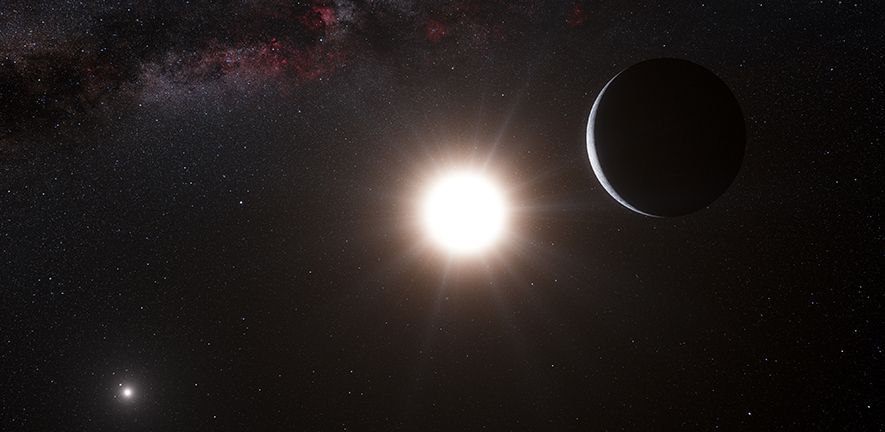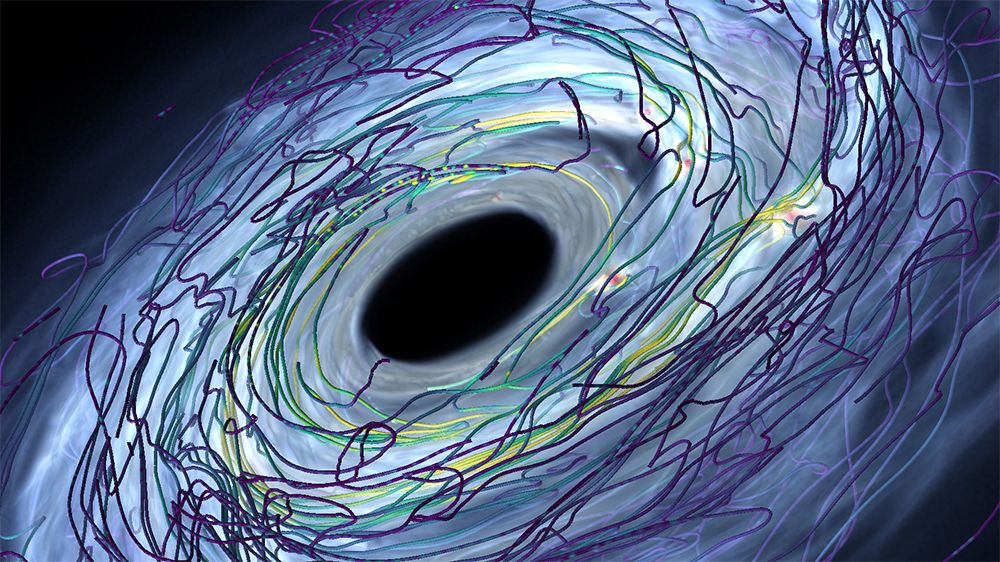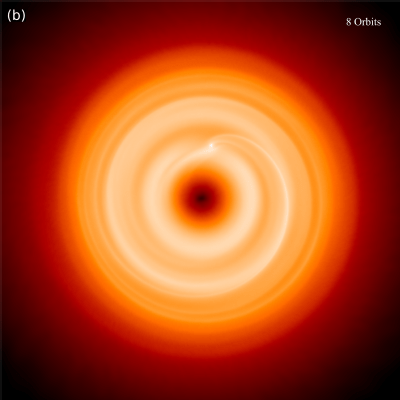One of the less appreciated aspects of George Lucas’ vision for Star Wars was that he predicted the existence of planets in binary star systems years before we saw even the first exoplanet. Now a team from the University of Cambridge and the Max Planck Institute for Extra-terrestrial Physics have found how exactly those planets can form without being torn apart by their accompanying suns.
Continue reading “This is how you get Tatooines. Binary Star Planet Formation”The Sun is Mellow Yellow Today. Billions of Years Ago? Not So Much
Planetary formation theory has been undergoing a lot of changes recently, with an ever expanding litany of events that can potentially impact it. Everything from gravity to magnetic fields seems to impact this complex process. Now scientists want to add another confounding factor – massive solar flares thousands of times more powerful than the most powerful we have ever observed from the Sun.
Continue reading “The Sun is Mellow Yellow Today. Billions of Years Ago? Not So Much”Does Mercury Have a big Iron Core Because it’s so Close to the Sun’s Magnetic Field?
Magnetic fields are great for lots of things – directing explorers, levitating trains, and containing nuclear fusion reactions are just an example of what these invisible forces can do. Now we can ascribe another feature to magnetic fields – they can give planets a rocky core.
Continue reading “Does Mercury Have a big Iron Core Because it’s so Close to the Sun’s Magnetic Field?”Astronomers see an Accretion Disk Where Planets are About to Form
Planet formation is notoriously difficult to study. Not only does the process take millions of years, making it impossible to observe in real time, there are myriad factors that play into it, making it difficult to distinguish cause and effect. What we do know is that planets form from features known as protoplanetary disks, which are made up of gas and dust surrounding young stars. And now a team using ALMA have found a star system that has a protoplanetary disk and enough variability to help them nail down some details of how exactly the process of planet formation works.
Continue reading “Astronomers see an Accretion Disk Where Planets are About to Form”Planets may Start Forming Before the Star is Even Finished

Planets form from the accumulation of countless grains of dust swirling around young stars. New computer simulations have found that planets begin forming earlier than previously thought, when a planet’s star hasn’t even finished forming yet.
Continue reading “Planets may Start Forming Before the Star is Even Finished”Magnetic Fields Help Shape the Formation of New Planets
In all of scientific modeling, the models attempting to replicate planetary and solar system formation are some of the most complicated. They are also notoriously difficult to develop. Normally they center around one of two formative ideas: planets are shaped primarily by gravity or planets are shaped primarily by magnetism. Now a new theoretical model has been developed by a team at the University of Zurich (UZH) that uses math from both methodologies to inform the most complete model yet of planetary formation.
Continue reading “Magnetic Fields Help Shape the Formation of New Planets”Astronomers are now Finding Planetary Disks Around the Smallest, Least Massive Stars
Astronomers have been watching planetary systems form around sun-like stars for decades. And now, new observations with the ALMA telescope reveal the same process playing out around the smallest, but most common, stars in galaxy.
Continue reading “Astronomers are now Finding Planetary Disks Around the Smallest, Least Massive Stars”What Did The Solar System Look Like Before All The Planets Migrated?
Early planetary migration in the solar system has been long established, and there are myriad theories that have been put forward to explain where the planets were coming from. Theories such as the Grand Tack Hypothesis an the Nice Model show how important that migration is to the current state of our solar system. Now, a team from Lawrence Livermore National Laboratory (LLNL) has come up with a novel way of trying to understand planetary migration patterns: by looking at meteorite compositions.
Continue reading “What Did The Solar System Look Like Before All The Planets Migrated?”Spiral-shaped Planetary Disks Should Be More Common. Giant Planets Might Be Disrupting Their Formation
Planetary system formation is a process that involves astounding and complex forces. Humans have only just started trying to understand what goes on in this extraordinarily important phase of the development of new worlds. As such, we are continuing to make new discoveries and come up with better models that better fit the observations that our instruments are able to collect.
The most recent of those improved models was announced by a research team at the University of Warwick. A paper in Astrophysical Journal Letters explores possible reasons for why there is a lack of spiral structures in newly formed protoplanetary discs. Their answer is a simple one: massive planets that form on the outside of the disc might be disrupting the spiral formation.
Continue reading “Spiral-shaped Planetary Disks Should Be More Common. Giant Planets Might Be Disrupting Their Formation”Astronomers See a Newly Forming Planetary Disk That’s Continuing to Feed On Material from its Nebula

Over the last few years, astronomers have observed distant solar systems in their early stages of growth. ALMA (Atacama Large Millimeter/submillimeter Array) has captured images of young stars and their disks of material. And in those disks, they’ve spotted the tell-tale gaps that signal the presence of growing young planets.
As they ramped up their efforts, astronomers were eventually able to spot the young planets themselves. All those observations helped confirm our understanding of how young solar systems form.
But more recent research adds another level of detail to the nebular hypothesis, which guides our understanding of solar system formation.
Continue reading “Astronomers See a Newly Forming Planetary Disk That’s Continuing to Feed On Material from its Nebula”







